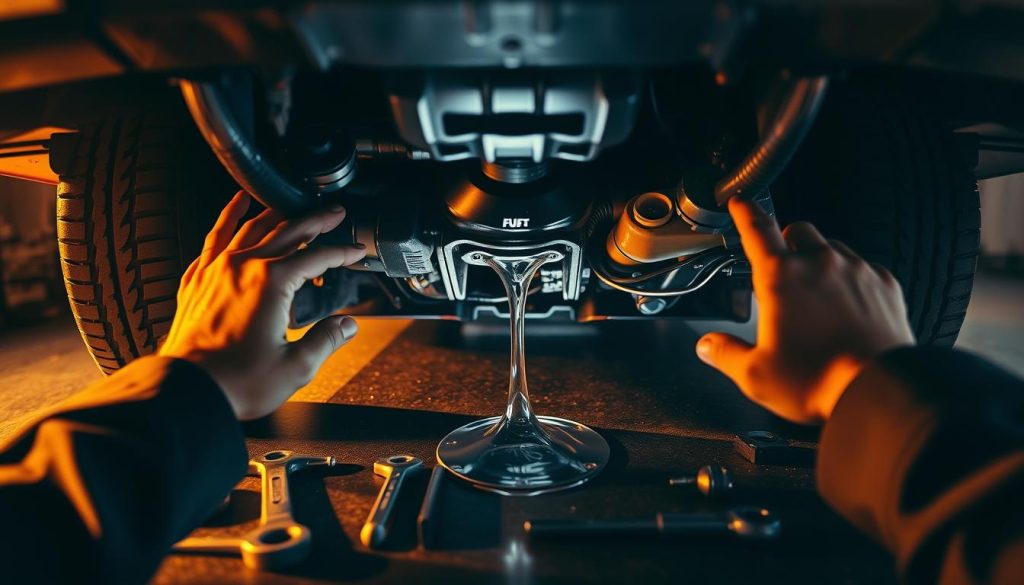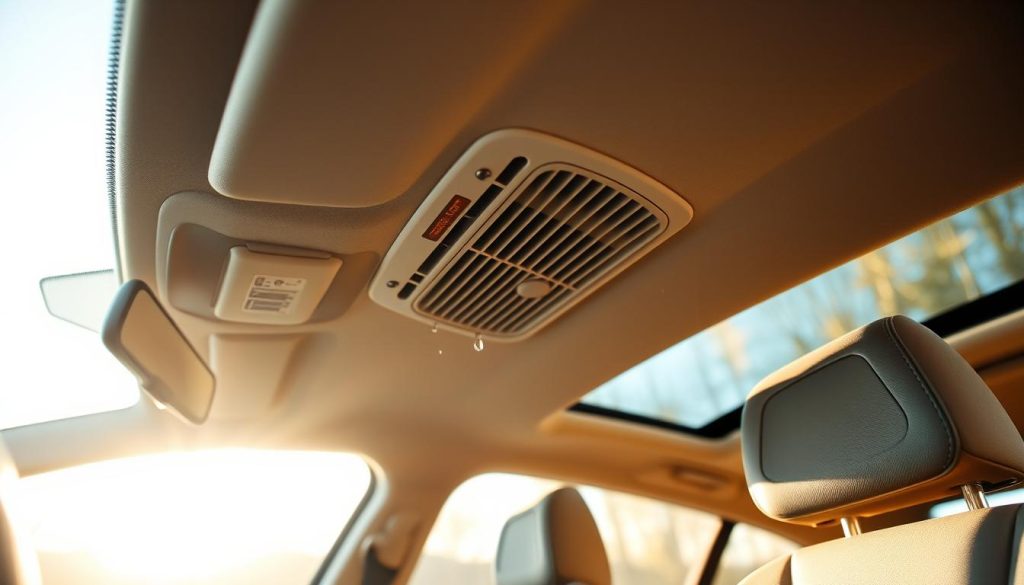A wet floor behind the passenger seat can be a frustrating issue for vehicle owners. Water accumulation in this area can lead to damage, mold, and unpleasant odors. It’s essential to diagnose the source of the leak to prevent further damage.
Identifying and fixing the leak can be a challenging task, but with the right guidance, it’s achievable. This article will provide a step-by-step guide on how to detect and repair the issue, ensuring your vehicle remains safe and dry.
Key Takeaways
- Common causes of a wet back passenger seat floor
- Step-by-step guide to diagnosing the leak
- Effective methods for repairing the issue
- Tips for preventing future water accumulation
- Importance of regular vehicle maintenance
Understanding Vehicle Water Leaks
Understanding the signs of water leaks in your vehicle is the first step towards effective repair. Water infiltration can lead to various issues, including electrical problems, mold growth, and damage to the interior.
Signs of Water Infiltration in Your Vehicle
Identifying water leaks early can save you from costly repairs. Common signs include:
- Damp or wet carpets and floor mats
- Musty smells or odors inside the vehicle
- Water droplets or condensation on interior surfaces
- Visible rust or corrosion on metal parts
Potential Damage from Untreated Water Leaks
If water leaks are left untreated, they can cause significant damage to your vehicle. Potential issues include:
- Electrical system failures
- Mold and mildew growth, affecting air quality
- Rust and corrosion on metal components
- Deterioration of interior materials and upholstery
Prompt action is crucial to prevent these issues from escalating.
Tools and Materials Needed for Diagnosis and Repair
To diagnose and repair water leaks, you’ll need the following tools and materials:
- A flashlight for inspecting dark areas
- A water test kit or a hose with a spray nozzle
- Sealants and adhesives for repairing leaks
- Drying equipment, such as fans or dehumidifiers
Having the right tools on hand will make the diagnosis and repair process more efficient.
Back Passenger Seat Floor Wet: Diagnosing and Fixing the Mystery Leak
Diagnosing a wet back passenger seat floor in your vehicle can be a challenging task, but with a systematic approach, you can identify and fix the leak. The key is to be thorough and methodical in your diagnosis.
Performing a Thorough Visual Inspection
The first step in diagnosing the issue is to perform a thorough visual inspection of the vehicle’s interior and exterior. Look for signs of water entry, such as drips, drops, or mineral deposits. Check the door seals, window gaskets, and sunroof (if equipped) for any signs of damage or wear.
Using the Water Test Method to Locate Leaks
If the source of the leak is not immediately apparent, use the water test method to simulate rain conditions. Spray water around the vehicle’s exterior, paying particular attention to areas around the windows, doors, and sunroof. Have someone inside the vehicle to help identify where the water is entering.

Checking Weather Seals and Window Gaskets
Weather seals and window gaskets are common sources of leaks. Inspect these areas for any signs of damage, wear, or deterioration. If you find any issues, consider replacing the affected seals or gaskets to prevent further water intrusion.
Inspecting the HVAC System for Condensation Issues
The HVAC system can also be a source of water leaks due to condensation issues. Check the system’s drain lines for any blockages or kinks. Ensure that the condensation drain is functioning properly and not clogged. A clogged drain can cause water to accumulate and leak into the vehicle’s interior.
As
“A systematic approach to diagnosing and repairing leaks is crucial to preventing further damage and ensuring the longevity of your vehicle.”
By following these steps, you can identify and fix the source of the leak, preventing further damage to your vehicle’s interior.
Step-by-Step Repair Solutions
Once you’ve identified the source of the water leak, it’s time to dive into the repair process. The following sections will guide you through fixing common issues that lead to a wet back passenger seat floor.
Repairing Door and Window Seal Leaks
Door and window seal leaks are a common cause of water infiltration. To repair car leak issues related to these seals, start by inspecting the seals for any signs of damage or wear. If you find any damaged seals, they should be replaced. Use a sealant to ensure a watertight fit around doors and windows.
- Inspect door and window seals for damage.
- Clean the area around the seals to ensure a good seal.
- Apply a suitable sealant to prevent future leaks.
Fixing Clogged Sunroof Drains
A clogged sunroof drain can cause water to accumulate inside your vehicle. To fix sunroof drain issues, first locate the drain tubes and inspect them for blockages. Use compressed air or a small brush to clear any debris. Ensure the sunroof drain is functioning properly by testing it with water.
- Locate the sunroof drain tubes.
- Clear any blockages using compressed air or a small brush.
- Test the sunroof drain with water to ensure it’s working correctly.

Addressing Air Conditioning Condensation Problems
Air conditioning condensation issues can lead to water accumulation inside your vehicle. To address these problems, check the air conditioning drain tube for any blockages. If the tube is clogged, use a wet/dry vacuum to clear the blockage. Regularly checking the air conditioning system can help prevent condensation issues.
- Check the air conditioning drain tube for blockages.
- Use a wet/dry vacuum to clear any clogs.
- Regularly inspect the air conditioning system.
Resolving Rear Window and Taillight Seal Failures
Failures in the seals around the rear window and taillights can also cause leaks. Inspect these areas for any signs of damage or deterioration. To repair, apply a suitable sealant around the affected areas. For more information on diagnosing similar issues, you can visit this resource.
- Inspect the seals around the rear window and taillights.
- Apply a suitable sealant to repair any damage.
- Test the seals to ensure they are watertight.
By following these step-by-step repair solutions, you should be able to effectively address the issue of a wet back passenger seat floor. Regular maintenance and inspections can help prevent future leaks.
Drying and Preventing Future Water Damage
After resolving the water leak issue in your vehicle, the next crucial step is to dry the affected area thoroughly. “Water damage can lead to mold and mildew if not addressed promptly,” as noted by automotive experts. Effective drying and prevention strategies are vital to maintaining your car’s interior health.
Effective Techniques for Drying Wet Carpets and Padding
To dry wet carpets and padding, start by removing any wet items from the car, including floor mats and seats if possible. Use a wet/dry vacuum to extract as much water as possible from the carpets and padding. If the damage is extensive, consider using a professional car detailing service. For less severe cases, opening the doors and using fans can help speed up the evaporation process.
It’s also beneficial to use a dehumidifier to reduce the moisture in the air, which can significantly aid in drying the carpets and padding. Acting quickly is key to preventing the growth of mold and mildew.
Preventing Mold and Mildew Growth
Preventing mold and mildew requires a proactive approach. Ensure that your car’s interior is completely dry before replacing any wet components. Regularly inspect your vehicle for signs of water damage or leaks. Using a mold and mildew preventative product on the carpets and upholstery can provide an additional layer of protection.
As an expert in car maintenance suggests, “Regular cleaning and inspection can go a long way in preventing mold and mildew.” Keeping your car’s interior clean and dry is essential for a healthy environment.
Regular Maintenance to Prevent Future Leaks
To prevent future leaks, regular maintenance is crucial. Check the weather seals around doors and windows for any signs of wear or damage. Inspect the sunroof drains if your vehicle is equipped with a sunroof. Ensure that the air conditioning system is functioning correctly and not producing excessive condensation.
- Regularly inspect weather seals and gaskets.
- Check sunroof drains for blockages.
- Maintain the air conditioning system.
By following these steps, you can significantly reduce the risk of future water damage and maintain a dry, healthy interior in your vehicle.
Conclusion
Diagnosing and repairing a wet back passenger seat floor is crucial to prevent further damage to your vehicle. By following the steps outlined in this article, you can identify and fix the source of the leak, whether it’s a clogged sunroof drain, a faulty weather seal, or an issue with the HVAC system.
To fix wet back passenger seat issues, it’s essential to act promptly. Water leaks can lead to mold, mildew, and structural damage if left unaddressed. Regular maintenance, including inspecting weather seals and checking the HVAC system, can help prevent future leaks and ensure your vehicle’s integrity.
For more complex issues, consider seeking professional help for car water leak repair. Experts can diagnose and repair leaks, ensuring your vehicle remains safe and dry. By taking proactive steps, you can prevent vehicle water damage and maintain your vehicle’s value.
FAQ
What are the common signs of water infiltration in a vehicle?
Common signs include damp carpets, musty smells, and water spots on the interior surfaces, particularly around the back passenger seat floor.
How can I diagnose a leak causing a wet back passenger seat floor?
Diagnose the leak by performing a thorough visual inspection, using the water test method to simulate rain conditions, and checking weather seals, window gaskets, and the HVAC system for condensation issues.
What tools and materials are needed to diagnose and repair water leaks?
Necessary tools and materials include a flashlight, gloves, a hose or spray bottle for the water test, sealant for weather seals and gaskets, and potentially replacement parts for damaged components like sunroof drains or taillight seals.
How do I dry wet carpets and padding after fixing a leak?
Dry wet carpets and padding by removing them from the vehicle, using a wet/dry vacuum to remove excess moisture, and then applying a drying solution or using a dehumidifier to thoroughly dry the area.
How can I prevent mold and mildew growth after a water leak?
Prevent mold and mildew growth by ensuring the affected area is thoroughly dried, using a mold-killing solution if necessary, and maintaining good ventilation within the vehicle.
What regular maintenance tasks can help prevent future water leaks?
Regular maintenance tasks include inspecting and maintaining weather seals and gaskets, checking sunroof drains, ensuring the HVAC system is functioning correctly, and monitoring for signs of water infiltration.
Can I fix a clogged sunroof drain myself?
Yes, you can fix a clogged sunroof drain by locating the drain, using a small brush or compressed air to clear the blockage, and then testing the drain to ensure it’s functioning properly.
How do I address air conditioning condensation problems?
Address air conditioning condensation problems by checking the condensate drain for blockages, ensuring the air conditioning system is properly sized for the vehicle, and verifying that the system is functioning correctly.


